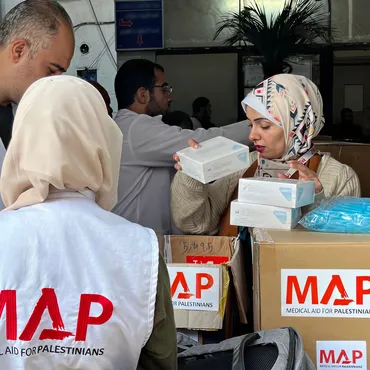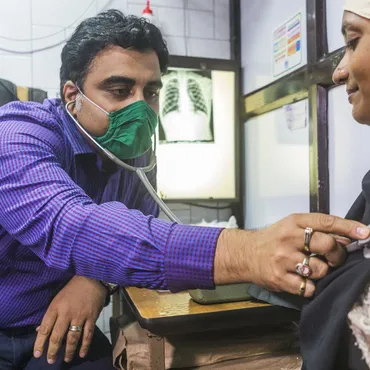Enhancing Grief Support: Insights from Sue Ryder's Diary Study
Our diary study pinpointed digital support gaps for those grieving, driving the redesign of a more engaging online service. This resulted in improved user satisfaction and engagement.

Sue Ryder

The overview
We’ve been supporting the development of Sue Ryder’s Grief Guide service since the initial discovery.
With the service launched and performing well in its first few weeks, we needed to explore how well we were fulfilling some of the harder to quantify parts of the vision we’d set out together - things like users feeling reassured, or better able to cope with grief.
By digging deeper into users’ daily experiences, we were able to understand more about the ways Grief Guide was already supporting users in navigating their grief, and where we could do more to help.
The cost of doing nothing
Part of Sue Ryder’s vision for Grief Guide is focused on reassuring and supporting users at times when other sources of support aren’t available or accessible. We want to give users the kind of information and support they need to navigate and better cope with grief, whenever and wherever they need it.
We knew we wouldn’t be able to learn enough about users’ daily lives through their individual, shifting and non-linear experiences of grief through research methods that separated users from their daily lives. Usability testing sessions are great, but they often don’t accurately recreate the kinds of scenarios and emotions that users experience day to day.
To be confident in achieving Grief Guide’s vision, we needed to go deeper.
Our approach
Finding the right approach
Throughout our work on Grief Guide, we’ve drawn on methods like exploratory interviews, surveys and sector analysis, SEO research, and usability testing.
So, we knew that we’d developed a service that was grounded in user needs, and which users could use to find information or use tools that were valuable to them.
We spent time thinking about the right approach for achieving the depth of insight we needed. We ruled out a pilot phase for a selected group of users, because we felt that would still introduce too much moderation and self-selection in the things we learned and the users we learned them from.
Before choosing a diary study, we scoped the number and segmentation of users we would need to work with and how long we’d need to run the study to gather the right level of insight without asking far too much of users. We also thought about how we’d protect the safety of our team and of each participant. We worked with Sue Ryder to agree safeguarding steps and services to signpost users to throughout the study.
We spent some time researching incentive approaches for similar studies and discussing internally and with Sue Ryder, to arrive at a schedule and incentive structure that we felt struck the right balance of valuable insight and participant time and compensation. It was important for us to make sure the study would yield valuable insight before asking users to commit their time and share their experiences.
Working with Torchbox on the diary study was a great experience, particularly as it was the first one I had been involved with in my career! Learning about the process and reading through the results was really interesting, but what really helped me in my role were the discussions that followed.
The challenge
Synthesis and Analysis
Diary studies generate a lot of raw data, which is time consuming to analyse. This volume of data is also part of what makes diary studies so valuable, so we needed to work as a team to find ways to reveal the depth of insight we needed, and maximise the value of the study.
Synthesis is vital and has to come before you even think about analysis. By synthesis we mean activities like data grooming and bringing everything together in a state where it's usable.
We used 2 primary tools for our synthesis:
A structured spreadsheet
Capturing the raw data in a format that was low friction during the response period, and easy to interrogate during analysis; By setting this up early, we could keep daily data capture tasks to a minimum, whilst lining ourselves up for further analysis later
A Miro board
Miro gave us a flexible, collaborative space to break down the data in phases:
- We started with broad groupings to provide some high level structure
- Then, we layered in related Sue Ryder insights from other recent relevant research, including experiences of grief, and our draft design principles for bereavement services
- After that, we were able to refine broad groupings into themes, and pulled out insights

Miro gave us a flexible, collaborative space to break down the data in phases.
As follow up, we ran a series of collaborative workshops to explore the recommendations along with other ideas or opportunities the combined team had spotted. We also discussed next steps, and agreed on some priorities.
These sessions were attended by everyone involved in the playback, helping to build context and momentum.
Onboarding
Diary studies can be a big commitment for both participants and researchers, and there is a fine balance to strike between focused research questions and prompts that are open enough to enable participants to share their stories.
Before we started sending prompts and gathering responses, we onboarded each participant carefully. Our onboarding included participant information sheets, signposting to further support services that they could access at any time, and making sure consent and incentives were transparent and understood by all participants. It is really important to make sure that your onboarding empowers participants to make informed decisions about if and how they will participate.
The onboarding phase also helped us communicate the focus of the study to the participants, so that during the data collection phase we could send prompts that acted as gentle, open reminders rather than prescriptive time-bound guidelines.
Offboarding and closing
Bear in mind that users can form a habit of hearing from and responding to someone, and that can make the end of a study feel fraught and difficult.
For this study and the sensitive subject matter, it was critical for us to offer an opportunity to close out the study whilst providing routes for further support or next steps for those who needed it. Each participant was offered an offboarding interview, as a chance to speak to our researcher and feel reassured that your responses had been read, heard and valued. These sessions gave us a chance to reflect on and explore any key themes with each participant, as well as drawing the study to a safe close.
Insights
Keeping an open mind
The diary study was a fantastic way of providing detailed data and insight about how users were using Grief Guide. It also gave us new insight into how experiences of grief can impact different aspects of users’ lives, giving us new areas to explore further.
But it also brought to light different approaches to known challenges and information that might have not originally been part of the brief. Some of these areas ended up becoming key themes.
This qualitative approach to user research becomes particularly valuable when working on something that you want or need to be a regular part of day to day life. The insights generated by the study will help inform continued enhancement of Grief Guide, as well as enriching our shared understanding of the ways grief and bereavement can impact users’ daily lives.
Let's chat



